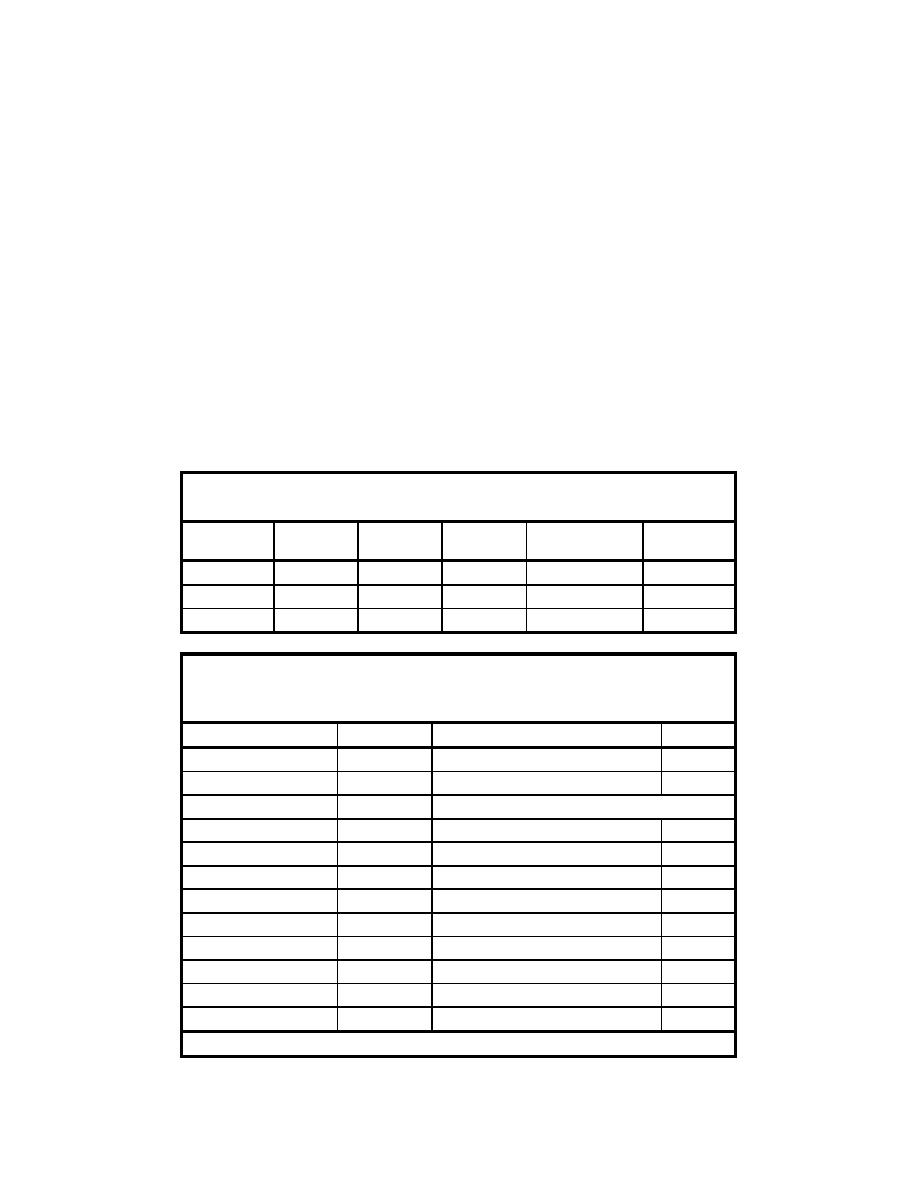
Results and Discussion
Transport parameters
The aquifer soils were high in sand, ranging from 27 to 77 percent sand, and
low in organic carbon (Table 16). Cation exchange capacity (CEC) was also
relatively low, ranging from 6.6 to 15.5 Meq 100 g-1. This is in marked contrast
to the surface soil, which was high in clay, organic carbon, and CEC. Transfor-
mation rate coefficients were higher in the surface soil than in the aquifer soils
for all tested compounds by at least an order of magnitude (Table 17). These
results indicate that 2,4DNT, 2,6DNT, 1,3,5TNB, and 1,3DNB were much less
stable in the surface than in the aquifer soils. Adsorption coefficients were
generally higher in the surface than in the aquifer soils (Table 18). Failure to
achieve steady-state concentrations in the surface soil precluded determination of
an adsorption coefficient for 1,3,5TNB. Results suggest that 2,4DNT, 2,6DNT,
1,3,5TNB, and 1,3DNB will be degraded and strongly adsorbed in surface soils,
but relatively mobile in aquifer soils.
Table 16
Soil Characteristics
Total Organic
-1
Soil
Sand, %
Silt, %
Clay, %
CEC, Meq 100 g
Carbon, %
Sharkey Clay
13.8
37.5
48.7
38.9
2.4
LAAP-C
77
11
12
6.6
0.08
LAAP-D
27
41
32
15.5
0.2
Table 17
Transformation Rate Constants K, hr-1, for 2,4DNT, 2,6DNT, 1,3,5TNB,
and 1,3DNB in Soils
-1
2
Soil
Compound
K, hr
R
1
LAAP-C (Aquifer Soil)
2,4DNT
0.0021
0.75
1
LAAP-D (Aquifer Soil)
2,4DNT
0.0005
0.23
Yokena Clay
2,4DNT
Transformation rate too rapid to measure
LAAP-C (Aquifer Soil)
2,6DNT
0.0023
0.80
LAAP-D (Aquifer Soil)
2,6DNT
0.0035
0.99
Yokena Clay
2,6DNT
0.0235
0.85
1
LAAP-C (Aquifer Soil)
1,3,5TNB
0.0027
0.74
1
LAAP-D (Aquifer Soil)
1,3,5TNB
0.0005
0.38
Yokena Clay
1,3,5TNB
0.1800
0.995
1
LAAP-C (Aquifer Soil)
1,3DNB
0.0013
0.53
1
LAAP-D (Aquifer Soil)
1,3DNB
0.0019
0.61
Yokena Clay
1,3DNB
0.0476
0.97
1
Data from Pennington et al. (1999).
55
Chapter 3 Transport Parameters for Firing Range Residues



 Previous Page
Previous Page
